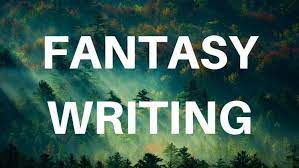Magical worlds filled with brilliant ideas are what fantasy books are like. They transport us to grand experiences in vibrant locales by fusing fantasy with reality. However, writing these stories involves more than just creating fantastical worlds and mythological creatures; it also involves understanding the interests of various reader types. Children ages 8 to 12 crave exciting new experiences. Stories that explore complex emotions and ideas are popular among teenagers. Deep tales about significant subjects are appealing to adults.
Every reader demographic desires something unique from fantasy literature. Youngsters desire pleasure and excitement. Teens desire to reflect on significant issues and experience emotions. Stories that provoke serious thought are appealing to adults.
Thus, while writing fantasy, we must consider the interests of each audience and craft stories that will appeal to them.
Let’s explore fantasy literature and which elements of professional fantasy writing services work.
Middle Grade Fantasy (Ages 8-12)
- The plot of middle-grade fantasy should be clear-cut and simple to follow. Steer clear of confusing narratives and too complex storylines.
- Place a focus on themes of adventure, solidarity, and self-discovery. The main characters ought to set out on adventures that result in development on a personal level and a fresh perspective on both the outside world and themselves.
- Make sure the material is appropriate for the intended audience’s age range. Steer clear of graphic violence, strong language, and gloomy, serious topics.
Key Elements:
Creating Protagonists: Craft characters that young readers can identify with and support. They ought to be bold, inquisitive, and ready to explore.
Magic & Wonder: Incorporate mystical elements that spark children’s imaginations without overstimulating them. Utilize magic as a means of exploration and adventure.
Humor and Lightness: To keep the mood cheerful, include humor and moments of lightheartedness. This can involve witty speech, humorous circumstances, and oddball personalities.
Action-Packed Plot: Maintain a dynamic narrative with lots of action, obstacles, and suspense. Youngsters like stories that go quickly and keep them interested.
Positive Morals: Distribute inspiring words of bravery, camaraderie, kindness, empathy, and cooperation. Use the story to subtly and entertainingly impart important life lessons.
Young Adult Fantasy (Ages 13-18)
- Create main characters and ancillary characters with complexity, imperfections, and a range of emotions. They ought to experience substantial development and deal with both internal and external conflict.
- Examine issues of self-discovery, identity creation, and the impulse to question social conventions. Readers in their twenties identify with heroes who defy authority and choose their own routes.
- Construct engrossing worlds with intricate political structures, a variety of civilizations, extensive histories, and magical systems. The scene should come to life and be essential to the narrative.
- Explore the emotional journeys of the characters as they deal with issues of friendship, love, betrayal, grief, and personal development. The challenges and victories of the characters should resonate with readers.
Key Elements:
Create protagonists: Create likable protagonists who struggle with identity difficulties, coming-of-age issues, and relationship complexity. Their development needs to reflect what the readers have gone through.
Romantic Subplots: Incorporate romantic relationships that help characters grow and gain more nuance. Steer clear of cliches and concentrate on accurate depictions of love and sorrow.
High-Stakes Conflict: Introduce confrontations that put the characters’ morals, ethics, and allegiances to the test. These can involve conflicts with morality, scheming in politics, and conflicts with strong opponents.
Empowerment Themes: Stress the importance of perseverance, self-acceptance, empowerment, and sticking up for one’s convictions. Urge readers to accept their individuality and find strength in hardship.
Adult Fantasy (18+)
- Adult fantasy prospers on complex plots, layered characters, and nuanced themes that delve into the human condition and existential questions.
- Address complex and often dark themes such as power struggles, moral ambiguity, redemption, sacrifice, and the consequences of one’s choices.
- Create fully realized worlds with detailed histories, diverse cultures, intricate political systems, and deep mythologies. The setting should feel authentic and immersive.
- Focus on character development and internal conflicts that drive the plot forward. Characters should be multidimensional, with motivations and arcs that resonate with adult readers.
- Pay attention to language, prose style, and thematic depth. Adult fantasy often explores philosophical, psychological, and social issues with sophistication and intellectual depth.
Key Elements:
Make complex individuals: Create multifaceted individuals with deep motivations, ethical dilemmas, internal conflicts, and grey areas. Avoid simplified depictions of virtue against evil.
Political Intrigue: Use scheming, power struggles, political maneuvering, and intrigue. Examine the effects that political decisions have on people and societies.
Philosophical Depth: Explore the nature of reality, identity, morality, ethics, and existential issues. Think critically and challenge readers’ preconceptions.
Subtle Magic Systems: Skillfully incorporate magic systems into the plot to make them essential to the themes and character growth of the tale. Steer clear of cliched magic clichés and concentrate on uniqueness.
Adult-themed: Talk about mature subjects like the pursuit of meaning, existential dread, betrayal, redemption, forgiveness, and love in all of its complexity. Give these ideas thoughtful consideration and poignant emotional resonance.
The outcome
In conclusion, writing fantasy literature for a range of age audiences necessitates a careful balancing act between storytelling skills, empathy, and imagination. Writers may craft captivating worlds and characters that captivate readers by comprehending the distinct tastes and expectations of middle-grade, young adult, and adult readers.

